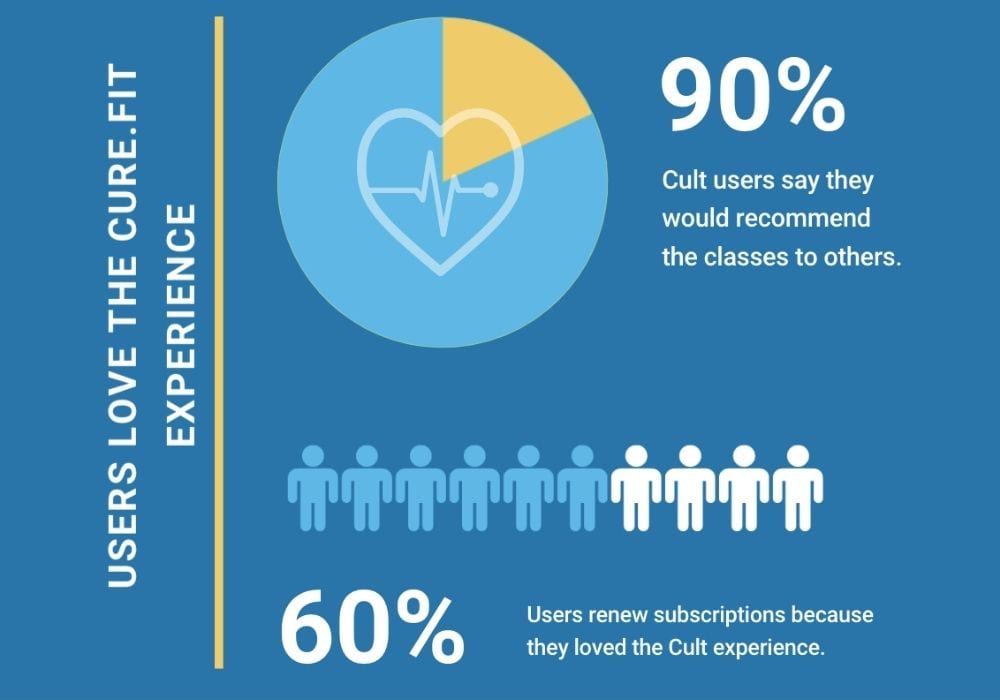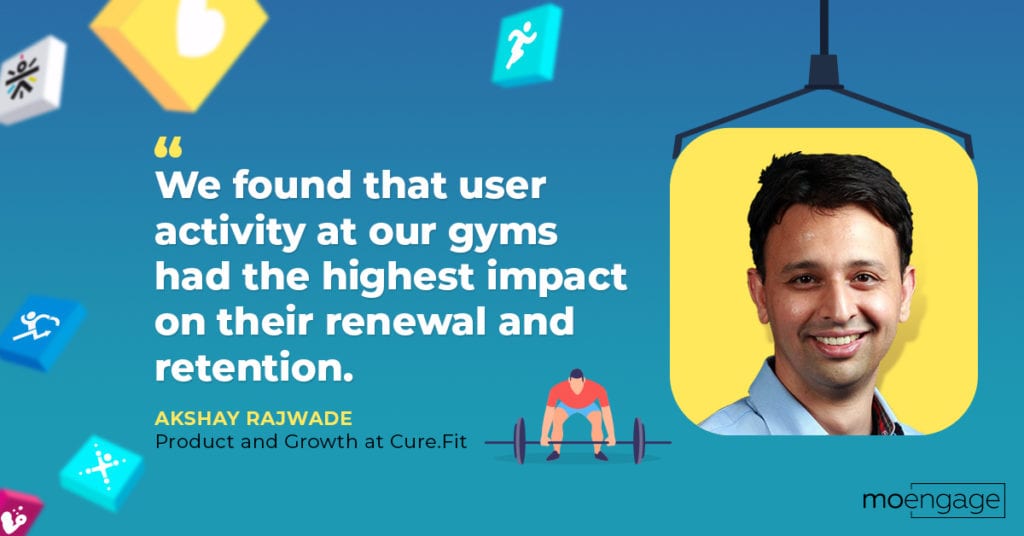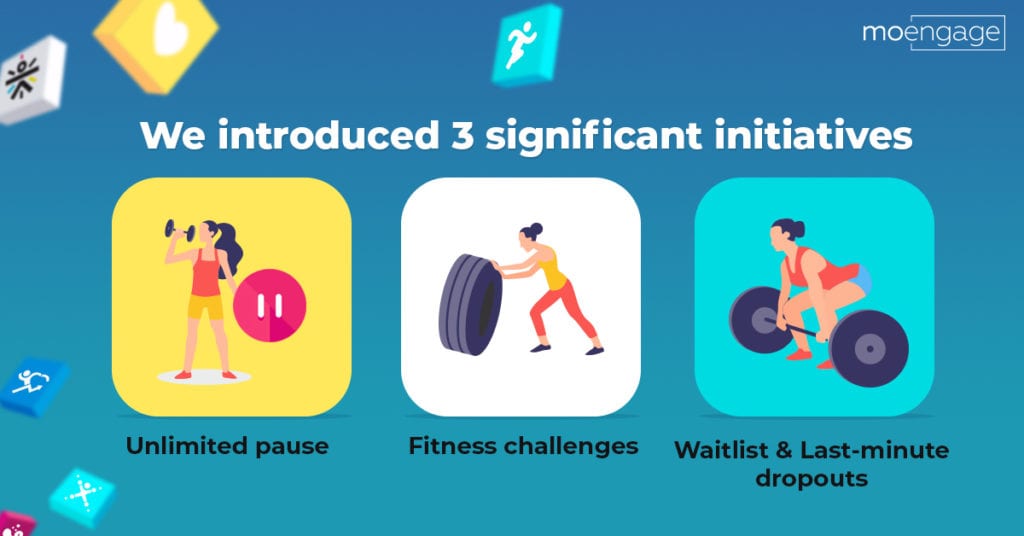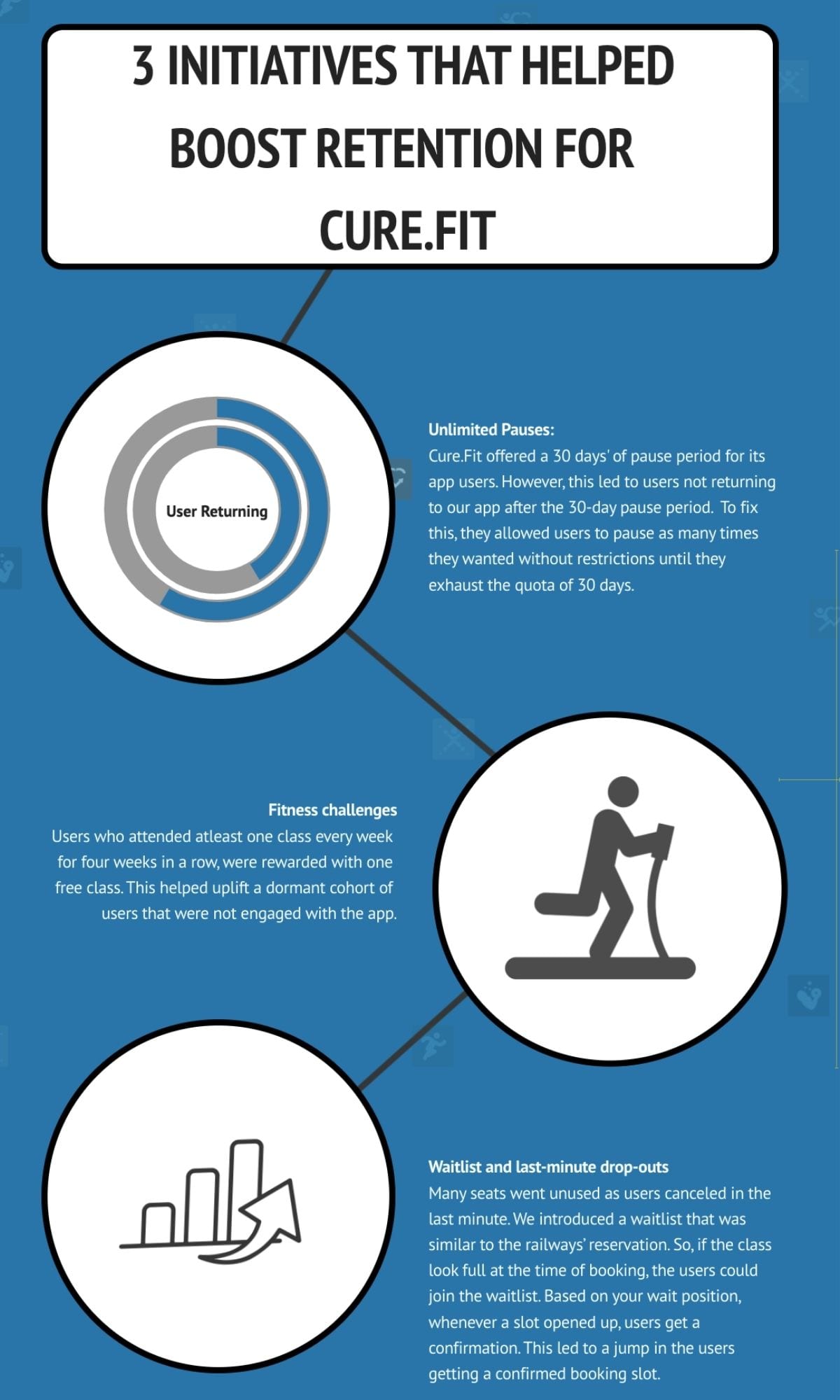Cure.Fit’s Growth Marketing Strategy for Mobile Apps [Case Study]
![Cure.Fit’s Growth Marketing Strategy for Mobile Apps [Case Study]](https://www.moengage.com/wp-content/uploads/2020/08/1-2-2.jpg)
Reading Time: 7 minutes
| Download the Growth Strategy Handbook – The Complete Growth Strategy Handbook – A guide to setting up teams, processes & technology stack for your growth program.
Download Ebook – Customer Lifecycle Marketing Campaigns: An In-depth Guide to trends, best practices, and real-world use cases |
Editor’s note: In our latest edition of Marketer’s Spotlight, Akshay Rajwade, who looks after Product and Growth at Cure.Fit, shares insights on how they engage users on their mobile app. Marketer Spotlight series covers opinions and advice from marketing leaders and influencers on the industry challenges, trends, and best practices.
MoEngage: Can you tell us about Cure.Fit?
Akshay: Cure.Fit is an integrated health platform with both online and offline presence. Cure.Fit is an umbrella brand that covers four established verticals- Cult for fitness, Mind.Fit for overall mental wellness, Eat.Fit for healthy food, and Care.Fit for diagnostics and primary care. Currently, we are present in 8 cities – Bangalore, Delhi, Gurgaon, Mumbai, Chennai, and also in Dubai. We operate in over 200 fitness centers and have more than 500,000 subscribers.
Tell us what it means to do business in an industry like fitness where the churn is high? What are the common challenges that you face?
Cure.fit’s mission is to make health easy. Whenever I say that, people roll their eyes and say ‘yeah, right,’ and that’s because people think this is another lofty statement. However, it has a much deeper meaning here. If I conduct a poll today, everyone wants to be in good health. However, the reality is that very few people can achieve good health. This is because it’s tough to regularly practice health and fitness activities. Second, it does not give you instant gratification. It’s not like a surgery that you go in and out and see the results – it takes a while for you to keep at it before you see any tangible results.

Retention for us means users who are renewing their membership or being regular. In doing that, as any other team would do, we assessed a bunch of factors such as the format that they practice, accessibility to our centers, user ratings, discounts, and more. The reality is that all of these factors do matter and have some influence on retention.
However, the most significant insight that we found after analyzing tons of data is that user activity, i.e., the number of times users actually work out at our gyms, has the highest impact on their renewal and retention.

When we spoke to a bunch of users who did not renew our subscription, 90% of those users said they would recommend others to attend Cult’s classes. Less than 10% of the users said they could not find the right kind of format or center. More than 60% of users whose subscription expired, said they wanted to come back and join Cult because they loved it. From the data and the discussions we had our users it was clear that we had to work from a product perspective to drive activity if we wanted to get higher retention.
How did you manage to drive user engagement and retention, especially in an industry like fitness where the churn is high?
80% of users we talked to said they had a hectic work schedule. We heard things like – I am traveling, so I am taking a long break, or I have an injury or soreness, so I am taking a long break. This was the most important insight that we had – all of us keep thinking about exercising as a habit, but not exercising is also a habit. Once you fall off the radar, you fall off the fitness journey; the aversion to going back is that much more. Many brands say that in your customer journey, you acquire users, activate them, and your job is done. However, for us, to boost retention, we have to continuously work to keep our users as active as we can.

We launched a bunch of initiatives, but I’m going to talk about three initiatives and the kind of results that we saw and how those initiatives were conceived and what happened. The first one is an unlimited pause, the second one is a fitness challenge, and the third one is waitlist and last-minute dropouts.

Unlimited Pause: To give you some context, we understand that there would be days when users may not be able to use the product, and at the same time, they don’t want to lose out on their membership time. So we offer pause days or break days. Earlier, we would 30 days of pause per 3 months of the pack, which increased if you took a long-term membership. One of the things we also did was limit the number of times the user can take pauses.
However, what we observed was very interesting. We found out was that whenever users took pauses or breaks, they were taking longer breaks. Their rationale would be to maximize those 30 days. And in turn, when users took longer breaks they were more and more inactive on the product. That hurt. Because after one month, they wouldn’t return. So we introduced two important changes to this feature. We retained the 30 days of pause and allowed the users to pause as many times they wished to. The other subtle change was, we requested for the date they intend to come back. Earlier, we had a pause and unpause buttons like a music player. So you had to come back to unpause, or you’d exhaust your pauses. We decided to do something different. If the user was to go away for seven days, they could pause it, say on a Monday and end it on Sunday. We could expect them back in the class next Monday. We found that users started using the feature much more. Our users started taking shorter breaks and more users coming back to fitness sooner – this was a huge win for us.
Fitness Challenges: We wanted to get users into the habit of working out at least once or twice every single week and so we introduced a challenge. Users who attended at least one class or one fitness session every week for four weeks in a row would be rewarded one free session. We divided users into cohorts of zero class, which means that these users have not attended a single fitness session in the last two weeks, in three weeks, four weeks, or the last five weeks. We informed them about the challenge and this led to an uplift of a dormant cohort of users that were not engaged with our product in the past.
Waitlist and Drop-outs: At Cult, we operate time-bound classes which are run by professional trainers. You can book and attend any class that is available. If the class is full because we received the bookings, you have to book a different center or a different time. We also allowed our users to cancel their class one hour before the scheduled time. As a result, when we opened up bookings four days in advance, users would start booking the classes, and many would just cancel it closer to the date. Many seats were unused as users canceled at the last minute or because of no-shows.
To fix this, we introduced a system of a waitlist that was similar to the railways’ reservation against cancellation (RAC) format. At the time of booking, if the class might look full, users can join the waitlist. If you are the first person joining the waitlist and if the first cancellation happens, you get a confirmation. This led to a jump in the users getting a confirmed booking slot.
We also introduced a related feature called the last-minute dropout. We allow users to cancel classes one hour before it starts. Although we would send notifications to users about the upcoming class, sometimes they would not be able to reach on time or attend. So, we built an honor system wherein even if it is five minutes past the chosen time, users can drop out of the class. We launched this feature recently, and have seen that users who have booked but not showing up for classes had dropped significantly.
Do you have any particular takeaways to share with the other marketers and us?
I have three takeaways to share. The first is, when we talk about or think about growth, there is a lot of discussion about looking at data, doing experiments, being scrappy, agile, and so on. However, in my experience, what I’ve found most useful is that if you have to drive growth at a fundamental structural level, you need to perform hypothesis-driven experiments.
Mere data is not enough; you should have some insights about who your consumers are and have some rationale. It would be very easy for us to say that users don’t renew because the offer is not useful or because they didn’t like the product. However, unless you go deeper and understand what is happening, why is that happening, you cannot help those users or drive real growth.
The second is, if you look at the latest era of consumer products, it’s not limited by your technological capabilities. It is limited by the attention a user is willing to give you. It’s not constrained by supply; it is constrained by competition for demand. So, you should aim to blend consumer psychology deeply into the product that you are building, with the use of strong technology.
The last one is that the best insights sometimes are often hidden in plain sight. Activity drives retention, what’s the use of this insight? However, if you look at it carefully and pause for a minute and say, let me look at this data point and see what it is trying to tell me, you will find a whole new perspective on the product or the problem you are trying to solve.
Thank You, Akshay for highlighting the importance of hypothesis-driven experiments and helping us understand how they drive growth in the fitness industry where the churn is high.
Marketers – Is there someone you’d like us to feature in our spotlight series? What topics would you recommend for our next feature? We invite your recommendations and feedback via the comments section below.
| Related Stories – |







